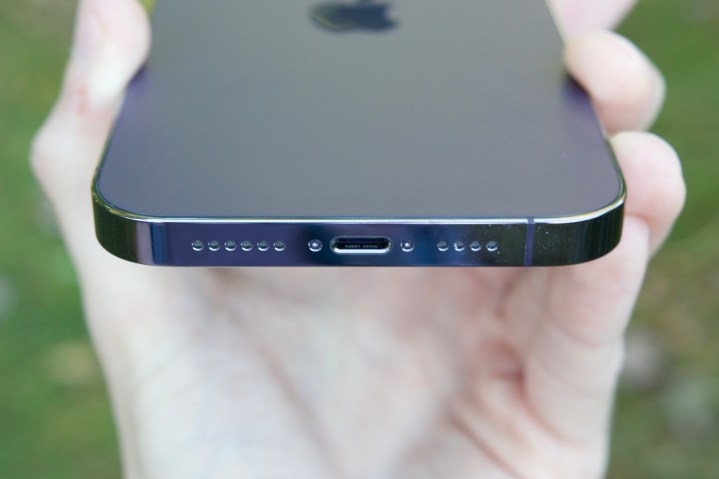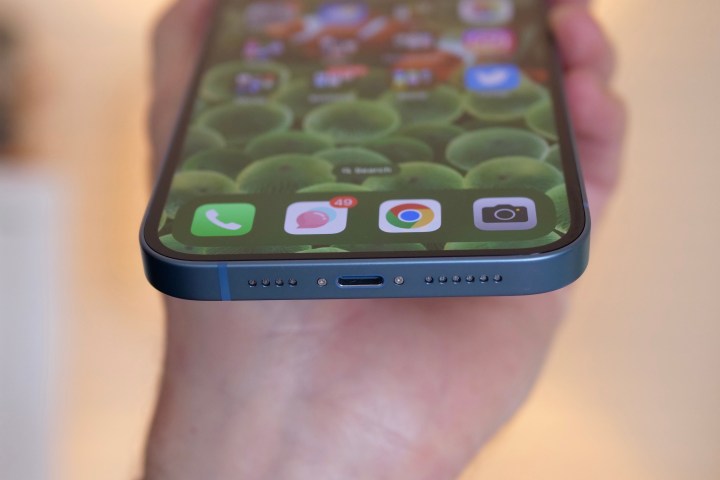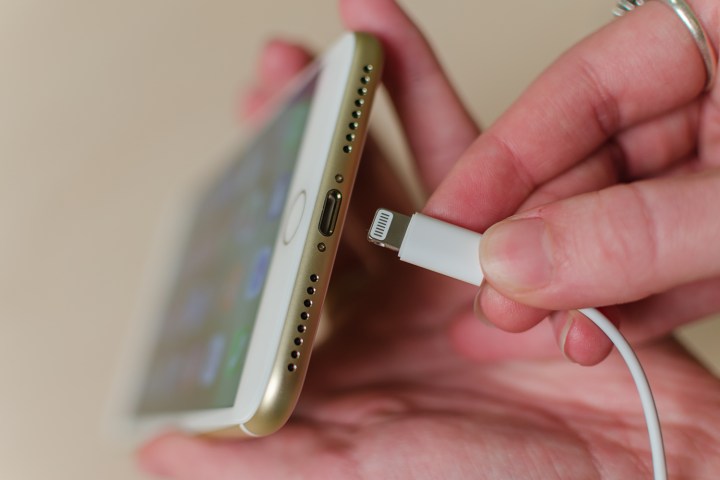Apple is going to embrace the USB-C port for iPhones, ditching the Lightning standard that it has held on tightly for years. In an interview with The Wall Street Journal, Apple’s Senior Vice President of Worldwide Marketing, Greg Joswiak, confirmed that Apple is going to comply with the EU’s decision of mandatorily putting a USB-C port for a wide range of electronic gadgets, including iPhones.
“Obviously, we’ll have to comply,” Joswiak told Joanna Stern when quizzed about the transition away from Lightning to the eventual USB-C destiny for iPhones. “We have no choice as we do around the world to comply to local laws. But we think the approach would have been better environmentally, and better for our customers to not have a government be that prescriptive,” he added.

Interestingly, the Apple executive stopped short of conforming when exactly we are going to see the first iPhones rocking a USB-C port. However, the famed Apple marketer hinted that it will happen in time with the European deadline, which is 2024 for OEMs. Going by that window, the iPhone 16 might be the first Apple smartphone rocking a USB-C port.
Apple’s Craig Federighi and Greg Joswiak (@gregjoz) join @JoannaStern at #WSJTechLive to discuss products, privacy and power at the tech giant https://t.co/fNo2JGwMB4 https://t.co/aGrTlZrUo4
— The Wall Street Journal (@WSJ) October 26, 2022
However, Apple might well start the transition with the iPhone 15 next year. The company has already shifted every iPad away from the Lightning standard, with the last one being 2022’s 10th-generation iPad. But an even bigger question is how Apple’s compliance with the EU’s decision will unfold.
Take, for example, the in-box accessory situation for iPhones. Apple stopped bundling wired earphones in the iPhone’s retail package a while ago, but it continued to supply the Earpods with iPhones in France until 2022 due to French law. After being slapped with multiple fines over the no-charger-in-retail-box situation, a Brazilian court ordered Apple to start bundling a charging brick with iPhones earlier this month.

Will Apple follow a similar pattern by selling USB-C iPhones in Europe, and Lightning-equipped iPhones elsewhere is not known yet. Making the USB-C port universal for iPhones everywhere sounds like the more reasonable move, but this is Apple we are talking about here, so it’s always worth waiting for an official confirmation instead of sweet daydreaming over speculations.
Bold claims, weak reality
Apple has often made bold claims regarding environmental responsibility and cited e-waste concerns as the reason behind the rapidly vanishing accessories that used to ship with its phones. The decision to stick with Lightning for iPhones, the biggest money-maker for Apple, has to do with e-waste worries, or so says Apple.
“What are you gonna do with these cables over time, if they are no longer useful,” asked Joswiak during the interview. To send home the point, the Apple executive mentioned that there are billions of cables out there in the possession of iPhone and iPad users, all of which are now clearly destined for an e-waste dump.
But hey, if Apple was really concerned about e-waste pollution, it would have adopted the USB-C standard for iPhones, just like the rest of its smartphone industry rivals. Not only would it be convenient for all smartphone shoppers, but it would have been beneficial for the environment, too.

Apple could have made the charger optional in the box, letting customers decide if they want it with their iPhone, instead of selling it separately and making money from it. When asked why Apple was so fond of the Lightning standard, Joswiak threw the device ecosystem argument.
“Well, it’s been a great connector and over a billion people have it already. Have the cables. Have what they need. Have all the infrastructure in their homes. Have speakers that work with it,” the veteran Apple executive said.
Lightning ain’t lightning fast, Apple!
“For most iPhone customers, it’s primarily about charging,” Joswiak remarked about the utilitarian side of Lightning. However, the latter argument doesn’t make a lot of sense. But if it was all about charging — and innovation, the company has often touted — Apple should have technically stuck with the Lightning port for iPads, too. Not everyone runs complex productivity software involving frequent file transfer between the tablet and PC, at least not on the vanilla iPad.

“Lightning charges pretty well,” Joswiak added as one final argument. Well, it merely serves the technical purpose of charging, but there really hasn’t been any remarkable innovation in that domain. Apple has often claimed that overarching standardization stifles innovation, and that’s part of the reason why Lightning has remained a mainstay on iPhones.
But the reality is not really kind to Apple. Take the iPhone 14 Pro, which starts at $999, but still can’t cross the 30W charging mark. I paid nearly $1,600 for my unit in India, and it infuriates me every single day that a $300 Xiaomi phone can charge at 120W over USB-C, for less than one-fifth of the premium that Apple slapped me with.
Except for Apple – and Samsung and Google, to an extent – almost every smartphone maker has made stunning progress at fast charging tech over the same USB-C standard that Apple has bashed historically, yet ironically embraced the same for its iPads. It comes as a great relief that iPhone, the single highest-selling smartphone in the world, is finally embracing a convenience that is accessible, affordable, universal, and environmental-friendly. Thanks, Apple, but honestly, no thanks.



